With its fourth iteration just completed, Athens Jewelry Week (AJW) 2019 had its biggest, most complex year yet. Originally, AJW was intended to bring contemporary jewelry and Greek makers together to expand horizons and exchange ideas. What started as an intimate showcase of Greek jewelers has grown into a large-scale international event, “open to every active member of the contemporary jewelry scene.”[1] As with any successful international event, the questions of how it came about and who made it a reality are raised. In this interview, the members of the Anticlastics team, Erato Kouloubi and Niki Stylianou, discuss the delicate balance of making, curating, and collaboration. Both successful in their own practices, they give some insight into how a simple idea and mission can grow into an expansive opportunity for collaboration and connection.
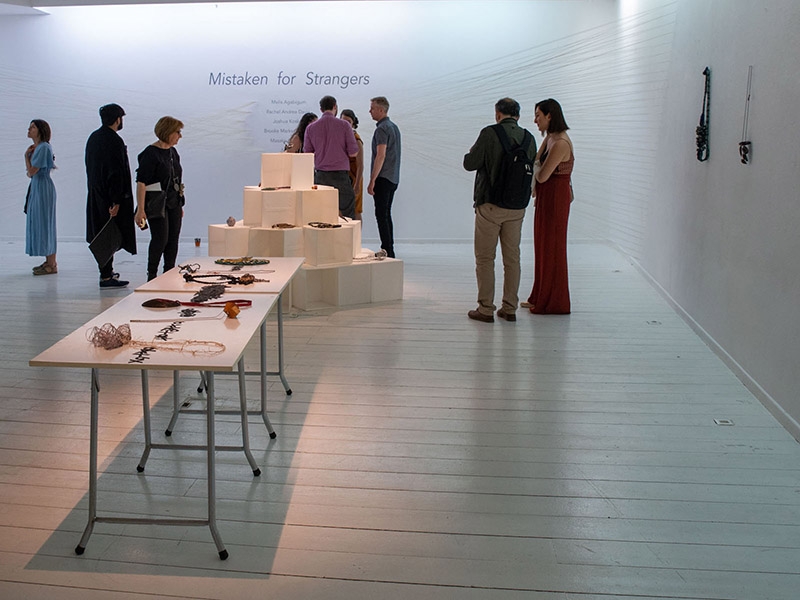
Melis Agabigum: Erato, you’re both a jewelry designer and the co-founder/owner of the gallery “Popeye Loves Olive Art Space,” and Niki, you’re also a jewelry designer, as well as a creative consultant and the current managing editor of Autor Magazine. How did each of you come to be part of the contemporary jewelry field? What was the moment when you knew you wanted to be designers and makers?
Erato Kouloubi: At the age of 19, I passed by a jewelry school in Athens. “The art of jewelry” was written on the door. I got inside and saw some astonishing works. Immediately I knew that this was what I wanted to do. I did my studies at this school and abroad and have spent the rest of my life making jewelry. My approach to it has changed many times, but it has never ceased to impress me. I always find infinite ways to connect with it.
Niki Stylianou: I was born into a family of architects/artists. When I recall childhood memories, the images that come to mind always unfold around “making.” Instead of receiving toys as birthday or Christmas presents, I remember getting from my parents all sorts of materials, kits, and prompts for trying different craft projects. We used to gather together around the table of our living room to learn new techniques, get dirty with paint, make candles, weave colorful tapestries, bead bracelets, or sew fabric adornments. It was a family tradition that for years gave me great pleasure while opening a door to the world of creativity.
Much later I decided to become an architect. I studied architectural engineering in Greece and then went to London to complete my post-graduate studies. There, I had the chance to experience design, art, and craft and their various appearances. And after a while I came to know that, although architecture was for me the perfect base—a starting point for further diving into the world of invention, research, and creativity—it was not meant to be my life’s passion.
What was the moment when I knew I wanted to be a jewelry maker? I guess there was not just one decisive moment. Things sometimes have a “wise” way of working themselves out. I would say that I started making jewelry for fun. It was a hobby that, when my architectural practice allowed for free time, reminded me of my childhood and gave me the freedom to play designer, planner, and builder on a much smaller scale. What I didn’t know back then was that this hobby would become a mission.
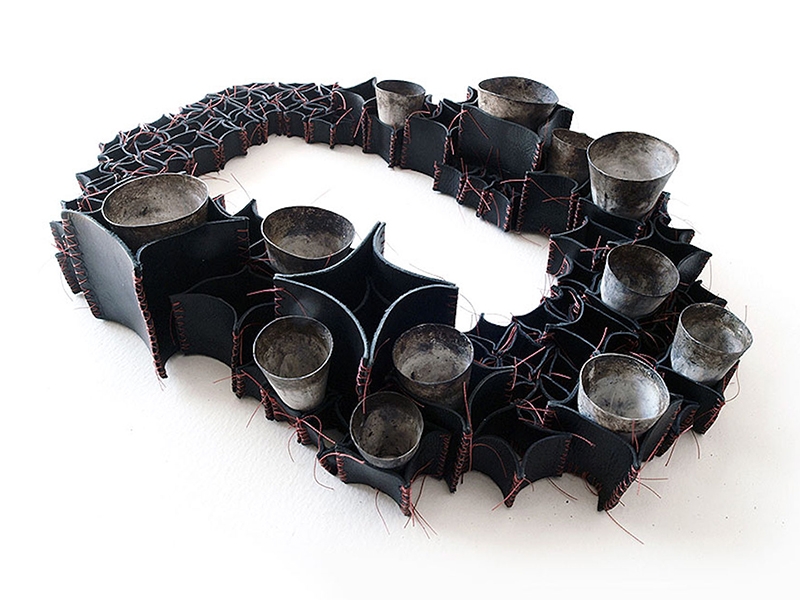
Did you know one another before cofounding Anticlastics? If so, what kinds of collaborative endeavors did you two have before the formation of this nonprofit organization?
Erato Kouloubi: I met Niki in a gallery. We were both showing work in the same exhibition. I got really enthusiastic about her work and her personality. We started traveling abroad to participate in different events, such as Joya and Sierrad, and we made collaborations. In 2014, I invited her to have a solo show in my gallery as part of a series of the project The After Joya Effect.
Niki Stylianou: Yes! I first met Erato during an exhibition in which we both participated, showing our works side by side. For me the connection was instant. As we shared interests and visions, and as we were walking on parallel paths, we started collaborating while embarking on a friendship that proved invaluable and lasting. Together we’ve organized workshops and seminars. Erato has also invited me to present my work in her gallery, in several group exhibitions and a solo.
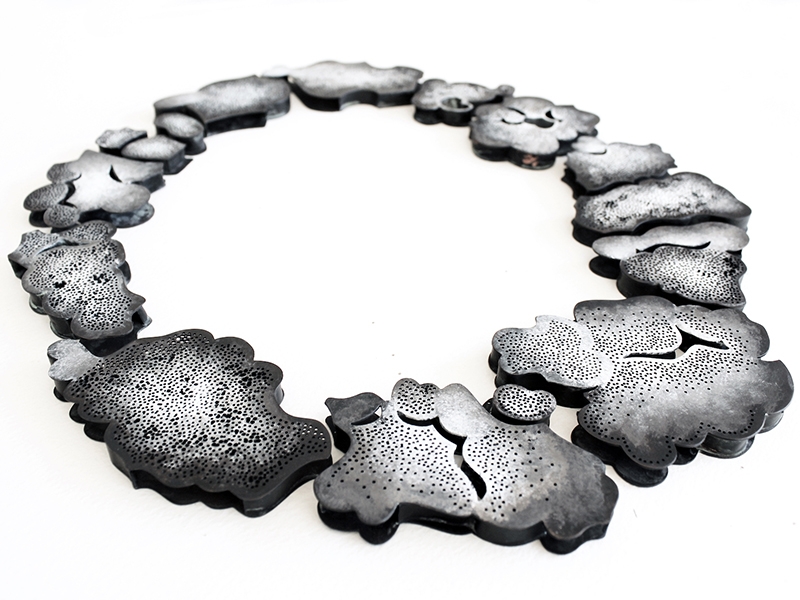
I see on the AJW website that you came together in 2016 to start the first iteration of this event. Where did you get the idea to form the Anticlastics, and how did this lead to the development of AJW?
Niki Stylianou: We decided to form the Anticlastics team and work on the AJW idea out of passion! After having visited different fairs and exhibitions in Europe together, we started talking about our shared experiences, thoughts, struggles, and needs, went on dreaming out loud, and finally reached a decision: We loved jewelry and we wanted to support it, enrich it, promote it in any way! After all, Greece has a great tradition of jewelry-making, and recently Athens has become an incubator of a very passionate and daring group of contemporary jewelry makers. Being artists ourselves, we thought that the best way to serve this growing community would be to create a space where all interested parties could meet, experience the latest developments in the field, exchange ideas, start new collaborations, and network. So we decided to bring contemporary jewelry to Greece. And this is how AJW was born.
Erato Kouloubi: In 2016, we had already spent some years traveling as part of being in international shows and fairs. We had visited Schmuck, in Munich; Joya/off Joya, in Barcelona; and Melting Point, in Valencia. We had been organizing seminars with invited artists from around the world and we had seen that there was a very passionate and active jewelry scene in Athens, of which we were part. We thought that our country needed support in this matter and we thought, “Why travel when we can bring the jewelry world to Athens?” And so we did.
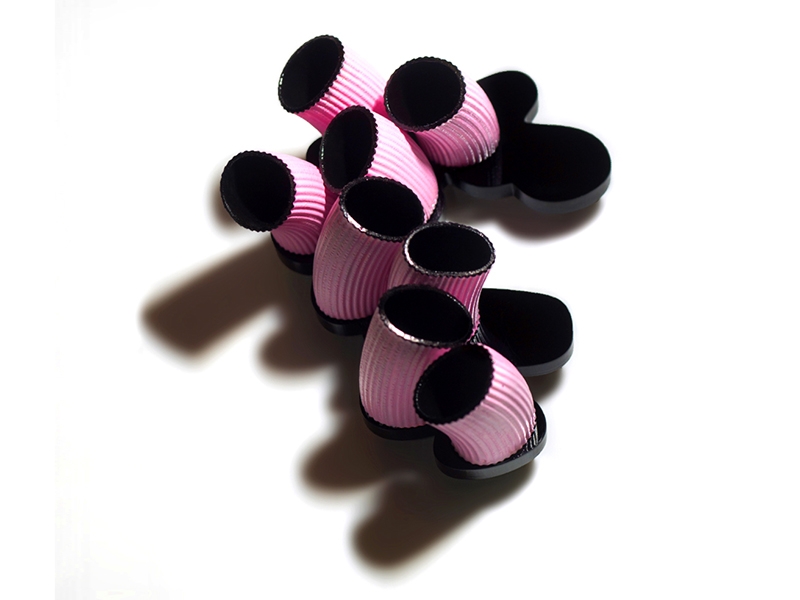
There are so many jewelry weeks around the world, and AJW is in its fourth iteration now. What were the initial goals you wanted to achieve when first planning AJW in 2016? Did you know that it was going to grow into such a large international event?
Niki Stylianou: The first edition of AJW was open to Greek participants only. Our main goal was to create a bridge and a dialogue between Greek contemporary jewelers living in our country and those who lived abroad. This dialogue highlighted the diversity and variety of the works presented—due to geographical and contextual differences—while reinforcing at the same time their similarities: common cultural influences, sources of inspiration, conceptual basis, and ways of expression. We wanted to unite Greek contemporary jewelers in a way, establishing them in their country and on the map.
Erato Kouloubi: That’s why in our first edition we showcased only Greek artists and that’s why our work was also included in the central exhibition. When we started, the only thing I could see was how to achieve this goal short-term. It was a huge project and it might have been difficult to think about the future. The only thing I was sure of at that time was that when you’re passionate and you work very hard, all your goals can be achieved.
Niki Stylianou: AJW 2016 was the beginning of a journey for us. Beginnings are full of potential, full of hope. But as their path is still untrodden, they’re also free of preconceptions. I guess at that point I wasn’t interested in the future of the festival. I only wanted to get to the first edition and live it as fully and as passionately as I could.
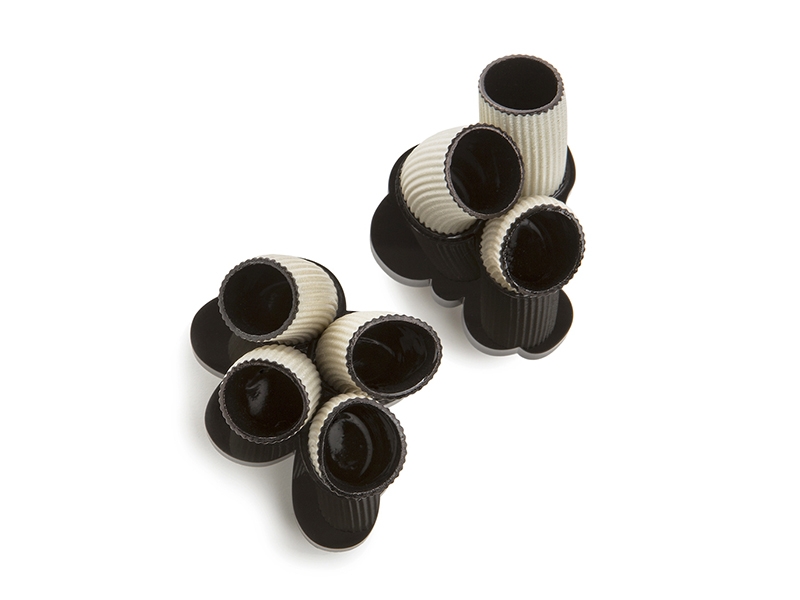
As a curator, you have to be able to gauge the bigger picture. You look at what works, what doesn’t, and you spend so much time planning and trying to guess at all the different obstacles you might encounter when the actual event or show is happening. Basically, you have to be able to evolve according to the different factors you encounter. How has Athens Jewelry Week evolved as an event from its first iteration in 2016 until its fourth in 2019?
Erato Kouloubi: First and most importantly, from our second edition we initiated a collaboration with the Benaki Museum of Modern Art. Despina Geroulanou, a member of the Benaki Museum board of trustees and director of the museum’s shop, shared the same passion and vision with us. After her proposal of hosting our central exhibition in one of the main rooms of the museum, everything went smoothly. To work in a museum like this is an endless source of inspiration. When it’s time to set up the Art+Jewelry: Intersecting Spaces exhibition, we feel like kids in a playground!
Niki Stylianou: It’s true. You can’t control every little detail. I believe that the most you can do when planning such a complex project is to give your best self. Every year we spend time imagining our next edition. We brainstorm. We plan. We revise. We take action. But we always face new challenges. And this is how we learn, how we exercise our inventive, creative, organizational muscles. Remaining flexible during the process is important. Allowing things to evolve, to even show us the way, at times, is important, too. Athens Jewelry Week resembles a living being. It has grown. It has opened up, becoming more inclusive and diverse. It has entered the museum. But although it became an international event and has spread wider, it still has the same inner structure, the intimate character and the clear vision it had in 2016.
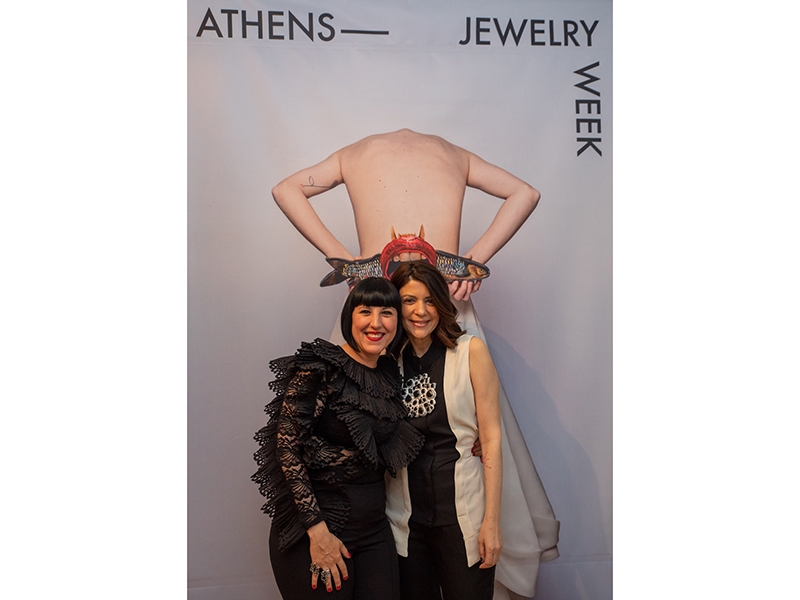
To organize any show, there’s a lot of planning that has to take place. What kinds of unexpected challenges have you experienced in bringing together the individual, group, academic, and main events?
Niki Stylianou: As AJW is growing, the biggest challenge for us is the scheduling of the final program. I already mentioned that the intimate character of the festival is one of the characteristics that we consider of utmost importance. That’s why we directly communicate with all our participants, we answer their questions, we assess their needs and we help them in every way we can. That is also why we plan with the same care our central exhibition as well as the external events that frame it.
Erato Kouloubi: To organize an event like this requires time and courage. The most difficult part in my opinion is the selection of spaces and then matching which groups/solos go where. Trying to synchronize almost 150 artists is definitely a challenge in terms of creating a program—making sure that the openings don’t overlap and the participants have the opportunity to be part of the festival and not only their own show. Keeping everybody satisfied is another challenge.
Niki Stylianou: While taking place, AJW resembles a spine that moves continuously, uniting all parties involved—we schedule all events in such a way that they don’t overlap and that each one gets the breathing time slot it deserves, we go together from opening to opening, we create opportunities for participants and visitors to gather and network, we party together, we share moments and laughs together. Is this an easy task? Definitely not! It’s hard to weave together the individual voices and expectations of almost 150 participants. One needs organizational skills, decision-making skills, clarity, patience, and guts.
Erato Kouloubi: In my opinion, at this stage, the artists have to trust the curators. But I guess this trustworthiness is something that you get over the years.
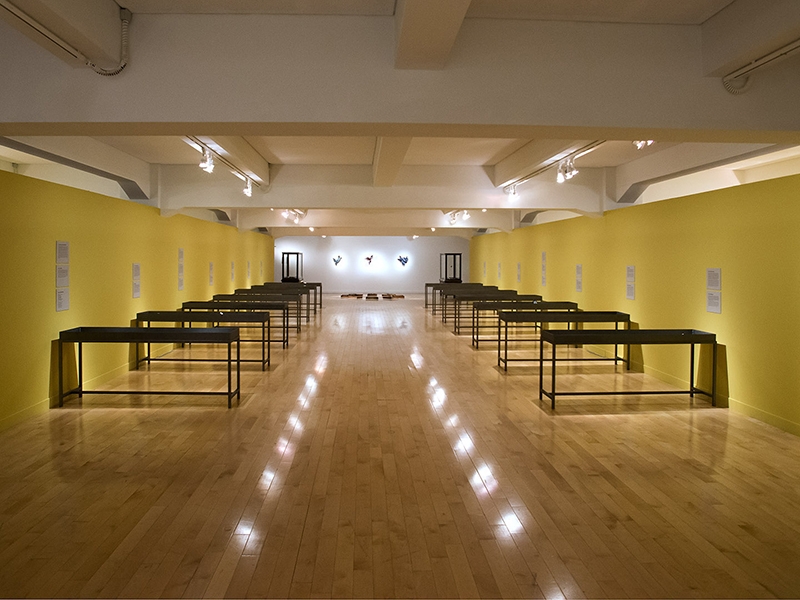
In addition to all the exhibitions, AJW has planned lectures and workshops. How do you pick those topics of discussion?
Erato Kouloubi: Every year we invite different “voices” to be heard in our program. Sometimes it depends on our showcasing artists but also on the topics we would like to highlight. We believe it’s important to give space to artists to share their techniques and aspirations, in order to inspire the field, but historical and theoretical issues are also always on our list.
Niki Stylianou: On one hand, we see lectures and workshops as opportunities to introduce our participants to the public. Artists have the chance to share their unique perspectives with the audience. They share personal truths, concerns, their lines of thought and creative processes, even techniques sometimes. This way, through give and take, they better support their work, promoting at the same time the field and creating deeper bonds with fellow jewelers and the public. On the other hand, we use these occasions to give individual “voices” the chance and the space to be heard, to initiate conversations and debates on different subjects and to help educate the wider audience.
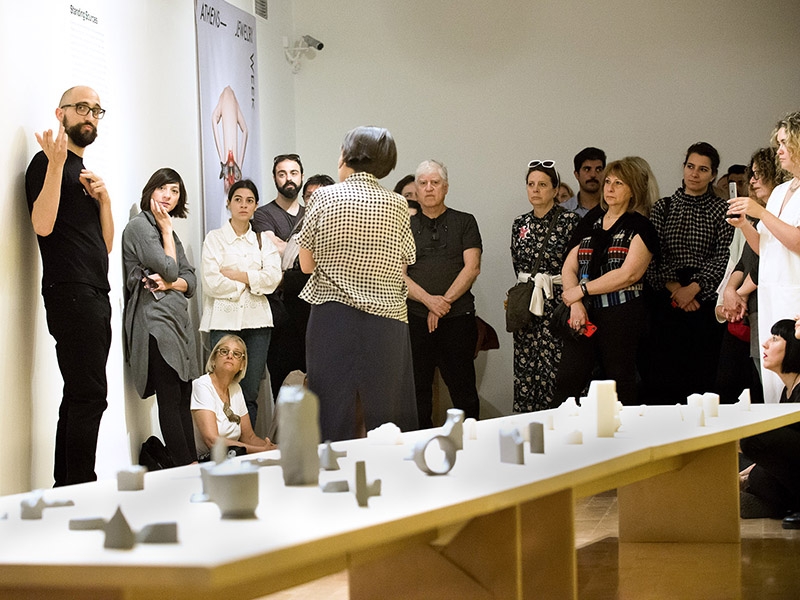
There are so many different cultural impacts and trends in the global contemporary jewelry field. Where do you feel AJW fits in dialogue with the contemporary jewelry world?
Erato Kouloubi: With AJW, we like to think that it has an independent character. It’s a space where students and emerging and international artists meet, exchange, get inspired by one another, and create bonds that will help the evolution of the field. It’s an intimate space where all the participants have the same possibilities by having different abilities.
Niki Stylianou: It’s difficult to define the character of AJW using a label or even a short line. Its identity is unique. We see it more as a meeting point. A promise for an annual gathering, where artists and visitors from different backgrounds, with different educational qualifications or experience, come to meet for the first time (or reunite) in order to connect, share, inspire, and be inspired.
The contemporary jewelry field is a niche group that’s relatively small when you really think about it. Last year, I saw so many posters plastered all over downtown Athens advertising AJW2018. It was exciting to see these posters in such an urban setting against buildings and walls that were nowhere near the event spaces. Additionally, many of the event spaces are gallery/bar/cafes all in one location. In planning an international event like this, how do you engage a non-jewelry audience to get them involved or excited about something like AJW? Have you noticed or seen any impacts this event has had on the greater Greek community in Athens?
Erato Kouloubi: It’s true that the contemporary jewelry field is a niche group that is relatively small, and our role as organizers of such events is to inform the wider audience about its existence—to invite them in. This is why we always make such a production by investing in posters plastered all over downtown Athens, promoting on three Athenian radio stations, sponsoring advertisements in local newspapers, etc.
Niki Stylianou: The impact that AJW has had on the greater community in Athens becomes more concrete year after year. The public in Greece might not have been ready for contemporary jewelry but has always been eager to look at new ideas with positivity and open-mindedness. We’ve reached out to this crowd in many ways. We’ve submitted articles on Internet platforms and print media, we’ve sponsored ads in local newspapers, we’ve collaborated with free press and community synergies, we’ve done radio and even tried billboarding. I find billboarding especially effective and somewhat fascinating. It turns the urban setting into a big book that is written anew each day and can be read from a close distance or from afar, from the seat of a passing car.
When we pick spaces, we also have this special crowd in our minds. What attracts their attention? How do they move in the city? Where do they gather?
Erato Kouloubi: The reason for choosing those spaces for our festival is that most of them engage a certain crowd, and that is the crowd we’d like to engage with our jewelry. We make our work visible and it’s the best way to get them to see it. And it happens. Every year we see and we hear from people saying they’re waiting for our next edition. I guess this is success.
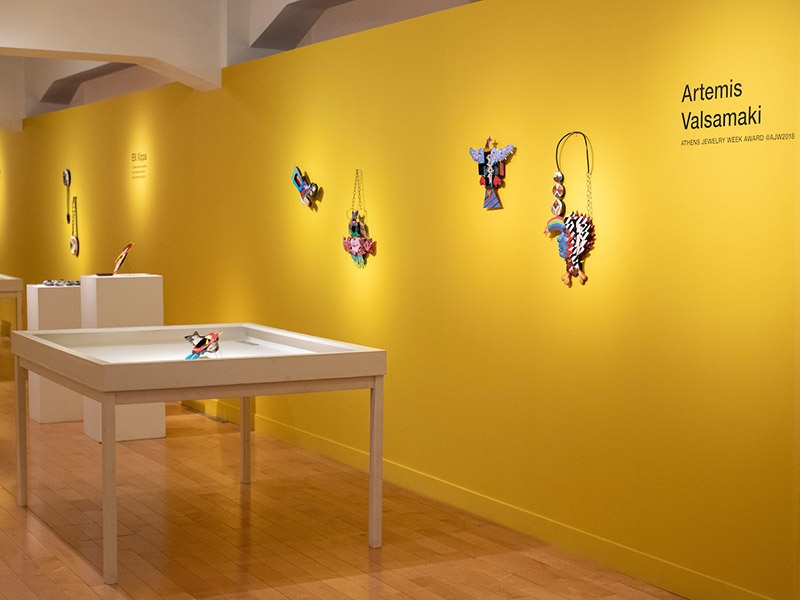
I know that both of you are very active in showing your own work in events like Munich Jewelry Week, Joya Barcelona, and Autor fair. Are there any instances that come to mind where you felt like being a curator has changed the way your approach your own making or creative process?
Niki Stylianou: Inevitably. I find that what has mostly changed is my approach toward measuring the time and effort that things need to evolve and toward the context in which things are presented. I used to believe that the most demanding and the most time-consuming phase in the life of a jewel is the creative process. But I came to realize that preparing a piece to leave one’s studio space in order to be exhibited and finally to be acquainted with its viewer or its wearer takes as much time and effort, if not more. Since god is in the details, presentation, in order to evoke the desirable response, demands not only the intervention of a keen eye, but extra love and care. Context is also important. Different contexts attach different meanings to exhibits, and surrounding environments allow for different interactions and interpretations.
Erato Kouloubi: I’ve been working as a jewelry designer for more than 20 years and had always curated small projects. When you feel so much involved with the field, you can’t separate yourself from what you are, because you’re all those things. Your approach changes because you’re constantly evolving. You have to make choices, but those choices help you go back again to where you started and have a greater look at the bigger picture.
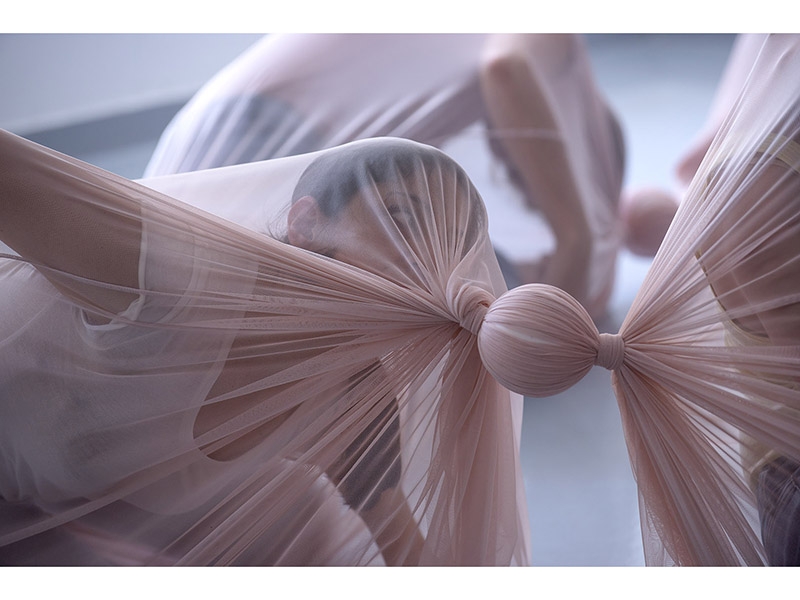
To find time to make your own work, own your own business, or curate various shows throughout the year in addition to organizing AJW must be difficult. Can either or both of you talk about the experience of being a business owner, a curator, and a maker? Do you feel like you’ve had to make sacrifices in your own practice in order to make time for something as time-consuming as organizing an event? Conversely, what kinds of doors have opened through this process?
Erato Kouloubi: As I said earlier, it’s all about choices. Of course having to deal with a lot of different aspects in your work can be stressful, but it’s also inspiring and not at all boring to shift from one role to another. Let’s say I had a hard day at the gallery with awkward customers; I can go to my studio and work on my bench and this changes my frame of mind in a minute. I believe it’s a gift to be able to create an environment that satisfies different angles of your personality. When I began to curate shows in my gallery, I felt it was an extension of my abilities. I had given space to my creativity to unfold in a different way.
The most important part of this work is the opportunity to collaborate with the artists. To work with a student or a newcomer and see the evolution of his/her career. To learn from established artists their points of view and visions and reconsider the way you work. To propose collaborations and see if they finally find a way to make a successful show.
Niki Stylianou: Working on different projects at the same time is like feeding different needs of mine, and it’s the only way I know how to be and to evolve. I can’t make a distinction between what you call my business and my personal artwork; between handling practical things and creating; between making organizational plans and making art. I find that all my different activities and roles intersect and inform one another. What have I discovered through this process? A space in between that acts as my jeweler’s “bench”; a place where I shift perspectives, experiment, try, risk, and learn to make choices.
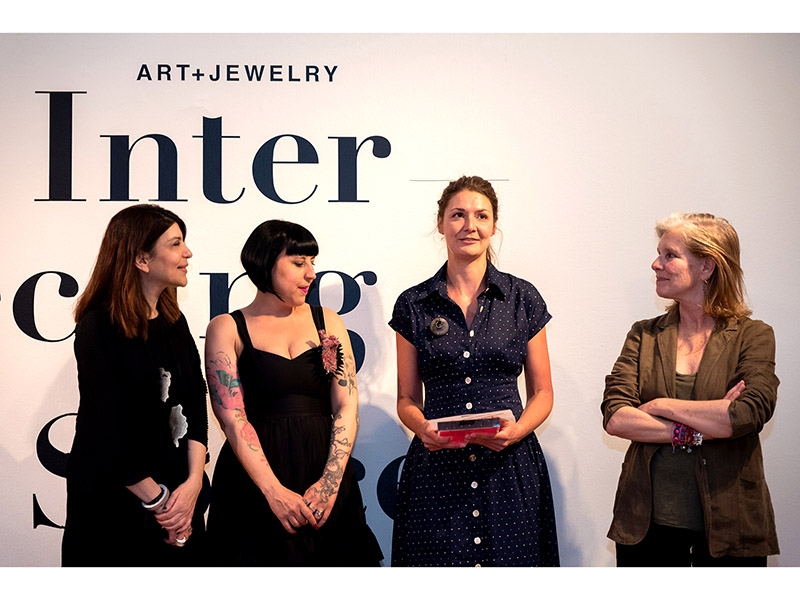
If you could pick a favorite year of AJW, is there one? Do you have a favorite event, show, or lecture that you felt was the most surprising or interesting?
Niki Stylianou: Every year there are unexpected turns and twists and pleasant surprises. I find it difficult to single out an edition or an event. But if I had to pick, I would say that AJW 2019 has been a great festival. Things flowed naturally not only during the unfolding of the program but also during the preparations.
I enjoyed every step of the ride—and believe me, it was a wild one! I was touched again by projects, ideas, intimate moments with old friends, and getting to know new faces. After all, what I’ve realized lately is that time flies and takes along all “doings.” What stays behind is beings and memories and the feelings they stir up.
At this point I feel particularly privileged that I practice what I love the most while collaborating with Erato, a person I consider a unique human being, a dear friend, and an exceptional business partner.
Erato Kouloubi: Every year is very special for me, but this year I have a lot of reasons to consider AJW19 as my favorite edition. First of all my collaboration with Niki has reached a level of symphony, communication, and support that made AJW feel so easy to do.
The spaces that we managed to include and the works shown were in great accordance. In my gallery I was proud to show the work of Hanna Hedman, an artist who is a great inspiration to me. I had the chance to meet Attai Chen, our guest artist, in person and realize that sometimes the sense of belonging can be of a greater importance above all to human development and well-being.
A meaningful mission is the reason why AJW gives me so much happiness and urge to go on. “The man that cannot visualize a horse galloping on a tomato is an idiot.” —André Breton
[1] anticlastics, “Who We Are.” http://athensjewelryweek.com/about/who-we-are/.




